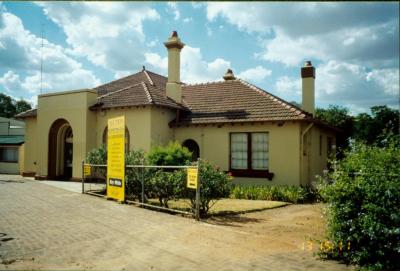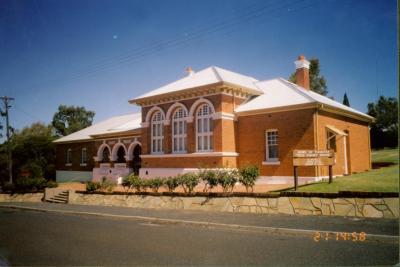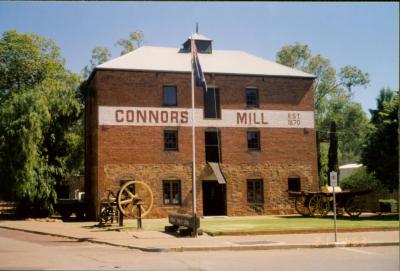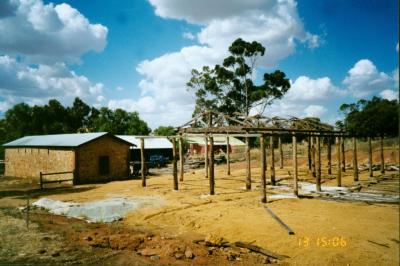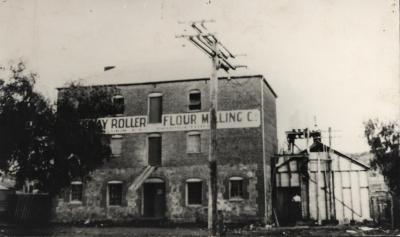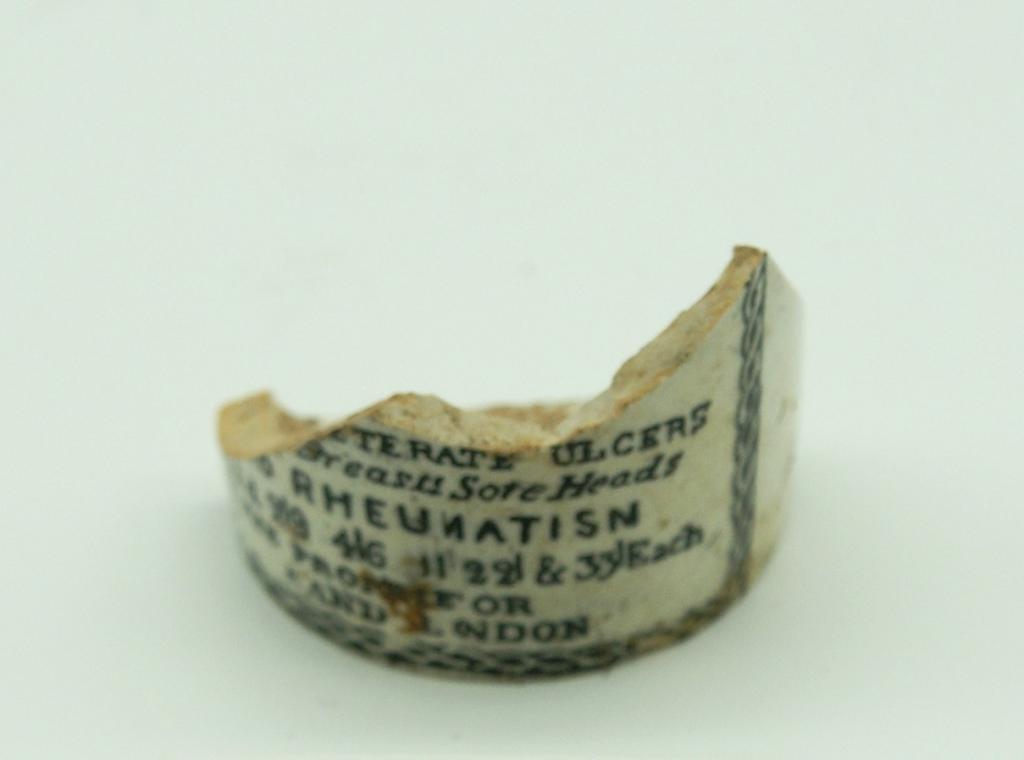HOLLOWAY'S OINTMENT JAR FRAGMENT
c. 1860Fragment of Holloway's Ointment jar (base) found during earthworks associated with Newcastle Gaol in 2008.
All that remains of the ceramic jar is half of the base and a portion of the wall.
However a portion of the black text design is still visible. "...eterate ulcers / ...Breasts Sore Heads / RHEUNATISN / ...2/9 4/6 1/22/ & 33 Each / BY THE PROPRIETOR / 244 STRAND LONDON".
The object is incomplete, chipped and dirty with staining on the inside surface.
The fragment was found at the Newcastle Gaol during excavations in 2008 associated with earthworks to counter rising damp. The fragment is composed of ceramic and would have measured roughly 3.5 cm across the base. All that remains of the jar is half of the base and a portion of the wall, however a fragmented description is still visible. From this description is has been determined that the fragment is from a Holloways Ointmentjar, an opium-based medicine produced in large quantities between1837-1931 and sold across the English-speaking world. The design of this jar dates back to the late 1860s and originally read Holloways Ointment. For the cure of inveterate ulcers. Sore legs sore breasts sore heads. Gout and Rheumatism. Pots 1/1d 2/9 4/6 1/22/&33 each. By the proprietor 244 Strand London.
While popular, the ointment was widely derided as quackery and snake oil.
Details
Details
The fragment is from a “Holloway’s Ointment” jar, an opium-based medicine produced in large quantities between 1837-1931 and sold across the English-speaking world. The design of this jar dates back to the late 1860s and originally read “Holloway’s Ointment. For the cure of inveterate ulcers. Sore legs sore breasts sore heads. Gout and Rheumatism. Pots 1/1d 2/9 4/6 1/22/&33 each. By the proprietor 244 Strand London.”
While popular, the ointment was widely derided as quackery and snake oil.
The value of the item considered for accession lies in its association with its relative representativeness and rarity. As an incomplete fragment this item is no longer a good representative of a ceramic jar (Holloways or otherwise), however the late 1860s design of Holloways ointment is considered to be quite rare. While the fragment has been removed from its original archaeological context it still directly relates to the history of the Newcastle Gaol building. As such, is desirable to have the item accessioned into the museum collection.
Copyright and Reference
Copyright and Reference
Photo by Phil Hart
Other items from Shire of Toodyay
- STIRLING TERRACE
- BANK BUILDING, STIRLING TERRACE
- AVON VALLEY CADASTRAL MAP
- OLD COURTHOUSE, SHIRE ADMINISTRATION
- CONNORS MILL AS VISITORS CENTRE
- TOODYAY MEMORIAL HALL
- RE-BUILDING WICKLOW SHEARING SHED
- CHIFFINGS, PETER JOHN
- HASELL, HENRY
- CONNOR'S MILL, DERELICT
- BACK TO TOODYAY VHS
- LUKIN'S TOODYAY ROLLER FLOUR MILL & POWER STATION, TOODYAY 1920

